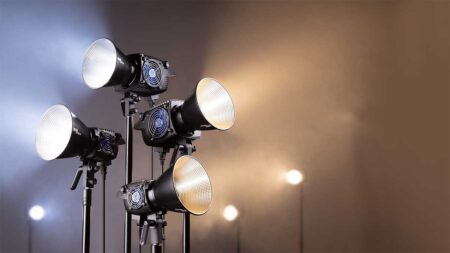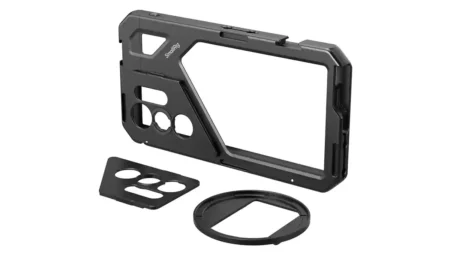In the first of a new series of videos, Angela speaks to professional wedding and portrait photographer, Robert Pugh, about how he created a coloured background to inject extra atmosphere and character into a portrait image.
Robert used three Rotolight Neo II lights in continuous mode for his image of ‘Harley Quinn’. He explains everything you need to know in the video and if you scroll down, you’ll find a step-by-step summary.
01 Light the subject
Position your main light above and in front of the model at around 45-degrees to one side to illuminate their face. Robert wanted a harsh light here so he used a bare Neo II (although that light is softer that a normal bare bulb). If you want a softer look, use a softbox or umbrella to diffuse the light and fill out the shadows.
02 Fit the gels and position the background lights
The background in Robert’s image is lit by two lights, one with a red gel over it and another with a blue gel.
To get the two distinct bands of colour, with some merging in the middle, the lights need to be positions close together behind the model but facing in opposite directions. If you want less colour merging, you can add a barndoor modifier to control the direction of the light.
03 Adjust the light power
The beauty of using continuous lights is that you can see exactly what you’re going go get and you can adjust the light power as you need.
Remeber that if you turn up the power of the lights with the gels, the colour that they create will be weaker, not stronger. Keep the power low for a stronger colour.
04 Use white balance
Your camera’s white balance setting should match that of the main or key light. This ensures that the subject’s skin tones look natural. In this case, the main light was set to 5600K, which is the same colour temperature asmany studio flash lights, so that setting was used on the camera.
Robert used the white balance control on the Neo II’s lighting the background to intensify the colour further by setting them to 3000K. This can be done by eye to give the result that you want.
Visit Robert Pugh’s website
Follow Robert on Twitter
Follow Robert on Facebook
Follow Robert on Instagram



